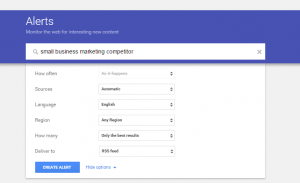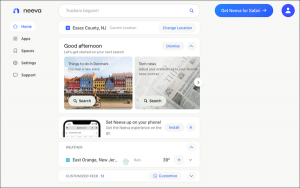Introduction
![Vilfredo_Pareto[1]](http://cdn.business2community.com/wp-content/uploads/2015/11/Vilfredo_Pareto1.jpg.jpg) For those of you unfamiliar with the Pareto principle, here is a quick introduction to bring you up to speed.
For those of you unfamiliar with the Pareto principle, here is a quick introduction to bring you up to speed.
Vilfredo Pareto, a famous Italian economist, engineer, philosopher and much more, made several important contributions to economics, particularly in the study of income distribution. Amongst many other findings, he observed that 80% of the land in Italy is owned by 20% of the population. And thus, we have the Pareto principle, or 80-20 rule.
I don’t want to know this, please, get to the point!
If you wish to familiarize more with the principle you can start your research from the Pareto principle wikipedia article, but let’s get back on track.
In marketing, we’ve updated the Pareto principle in referring to products where 80% of the product is consumed by only 20% of consumers — called the heavy half. Most products don’t display the Pareto principle. Dog food does — most dog food is consumed by big dogs (no surprise there).
We are going to deal with one of the key aspects of the 80-20 rule, which is that roughly 80% of the effects come from 20% of the causes.
This means that, in general, 80% of your posts should be aimed at keeping your followers engaged and interested in your topic, while 20% of your posts should be product pitches and serious business topics that end up making you money.
But first thing’s first, let’s get this story under way.
Know your target audience
I can’t stress this enough.
Getting to know your customers should not be a starting point for your marketing campaign, it should be the reason why you started your business in the first place — because you know what people need and you know how to satisfy their demand. If, by any chance, you missed this crucial step, or need to get an outside partner familiar with your target audience, take your time and write down their dominant characteristics and design your typical customer.
Personas

You’ll likely end up with several personas. Identify your dominant persona.
This is the person that buys most of your products or uses most of your services. This is the person who spends time online searching for you and makes a purchase or becomes a client. This is the person that praises you to their friends. This is, after all, the person that is more open to sharing your social media content.
This is the person that makes up 80% of your profits and is made up of 20% of your customers/clients and it is exactly the person you should focus on.
It’s fairly simple, but needs a bit of time. Which city/county/state/country does this person live in? Does this person work or go to school, or is maybe a senior citizen? Do they commute and how much time they spend commuting? What are the places they frequent? What is your customer’s avg. yearly salary, what do they like to do in their free time, and much much more. Basically, gather as much information as possible, for this will ensure that you will be able to provide much more diversity when it comes to engaging your typical customer.
I have personas. Now what?

You need that person to fall in love with you.
How do you do that? Be there when they need you.
You know when they work, you know where they shop, you know what music they’re into, you know what their hobbies are, you know when they get up and when they fall asleep. Use it to your advantage and be there before everybody else, or at least at the same. Most of the time the former will be the case if you think about the enormous amount of information traffic on the world-wide web, but that is a story for a different time and place.
There’s a time and a place for everything
Imagine your customer is coming home from a hard day’s work and they want to take their minds off of stress. Imagine how interested they are to hear a special offer for this and that or a stunning product review for product xyz. Have you imagined? Yeah, not worth the effort. The customer just wants to go home or travel to a sunny far away place.
On the other hand, it is a perfect time for a post about your superior space technology bed mattress or your once-in-a-lifetime 50% discount plane ticket to an island with a sunny beach in the middle of nowhere.
The principle is always the same
You’re a big supermarket? Share your discounts at the end of the month when people prepare big monthly shopping lists or on Fridays when many people plan their weekend shopping.
Your customer is a corporate white-collar type? Post your pitch during their lunch breaks.
Want to target students? Providing they behave themselves and don’t use their gadgets for browsing social media during classes, why bother sharing anything crucial for your income during the morning?
Get to know your typical customer and you will become the master of this game very soon.
I’ve tried and I just can’t seem to figure out my typical customer. Is there a chance for me?
Of course, you are not alone. There is a ridiculous amount of information out there so one option is strapping yourself with some patience and time and trying to figure it out on your own. If one does not have time or patience or possibly neither, there is always an option of asking your friend who happens to be a marketing expert. For those of you who are able to afford outside help, there are a lot of agencies who can help you with this.

I’ve actually had a pleasure of working with a creative agency from Sydney when I approached them on behalf of some local NGOs who didn’t possess enough knowledge in the field. It was a big success. And trust me, if you don’t know what you’re doing, it’s better to leave it to the experts. Whether it’s about marketing or your kitchen drain pipe suddenly decided to burst, some people just do it better than you. And there is no shame in that.
It’s not an exact science
I must take the opportunity to stress the fact that numbers don’t need to be exactly 80-20. There is no need to spend your precious time calculating the exact percentage of the amount of content you are posting for “fun”. You just have to understand the importance of keeping your audience interested in seeing your content whatever it may be.
In conclusion
Keep your content engaging, but focus the attention of the audience on you differently in different times. There is a significantly better chance that a customer will look for information about a specific company or business (or whatever) if they know it is around, if they’ve seen people talk about it, or even got engaged by liking or sharing a certain piece of content that a certain page has provided.
After you have your customer’s attention, all you have to do is do your best.
Digital & Social Articles on Business 2 Community(84)







